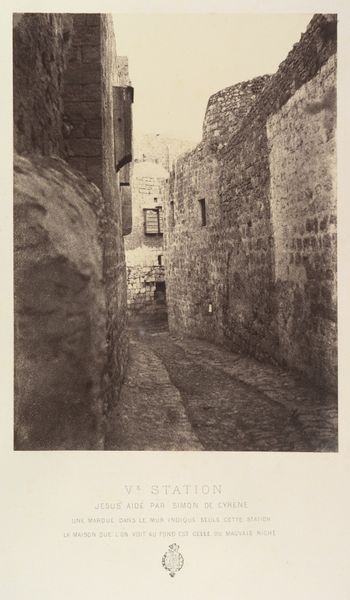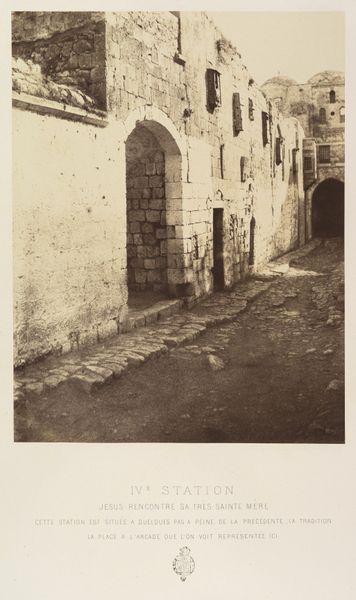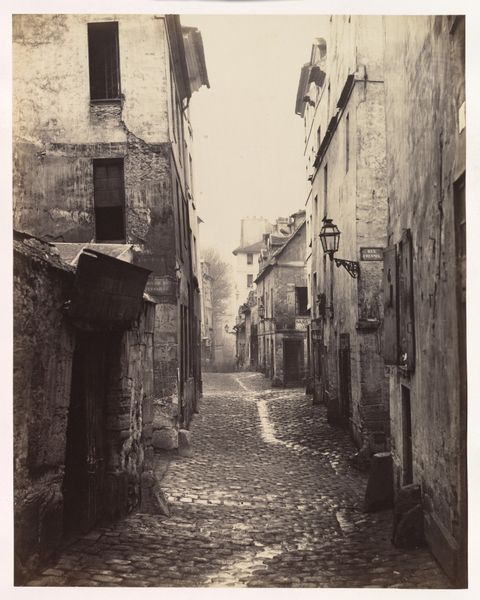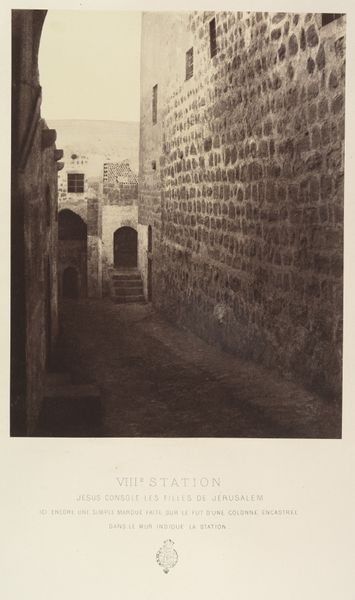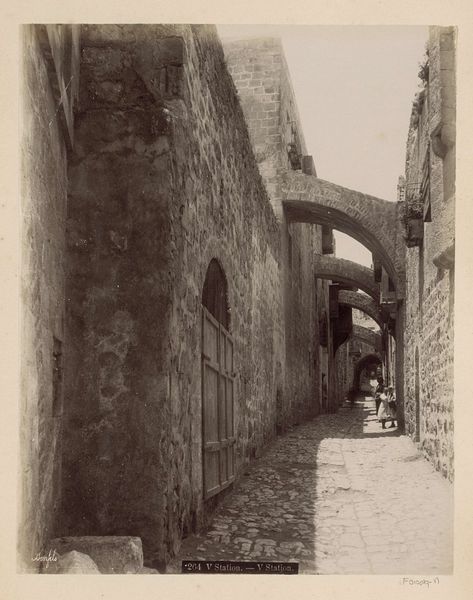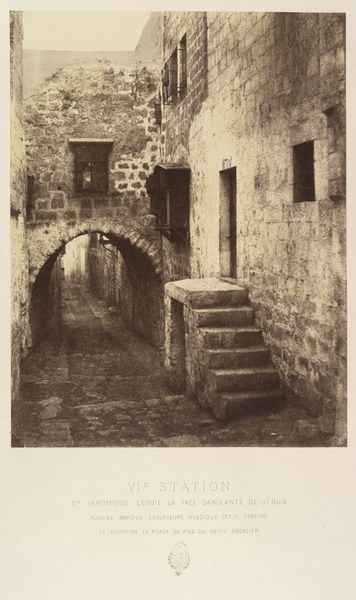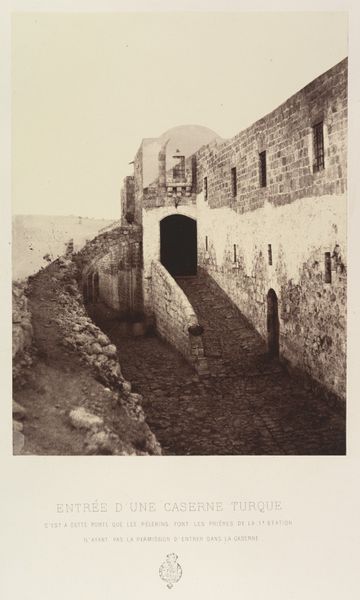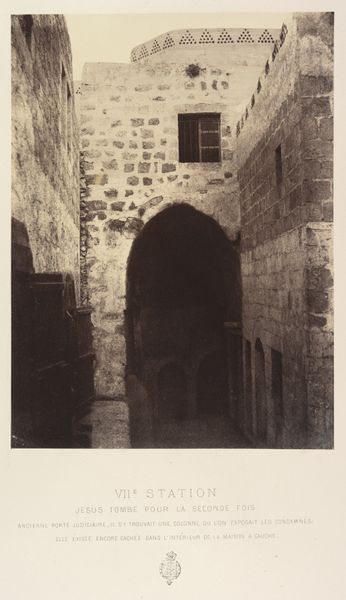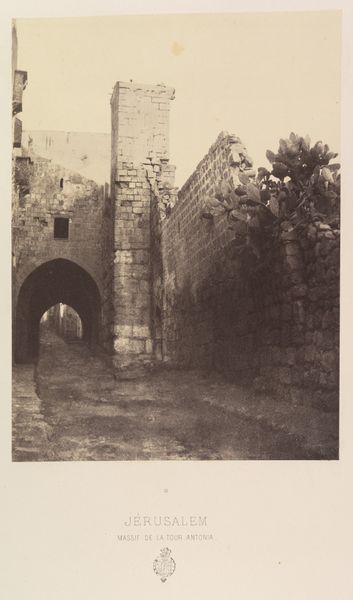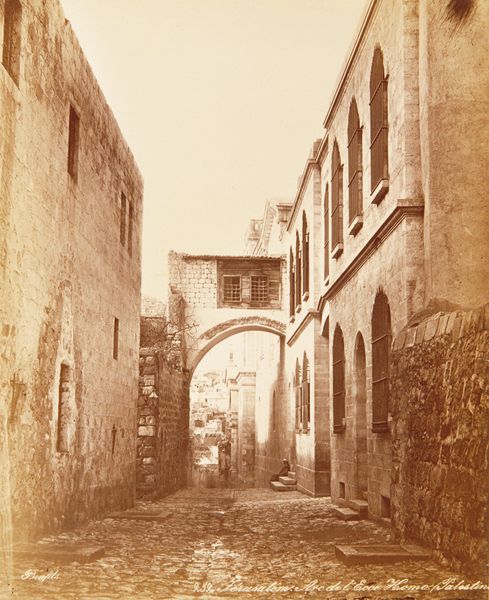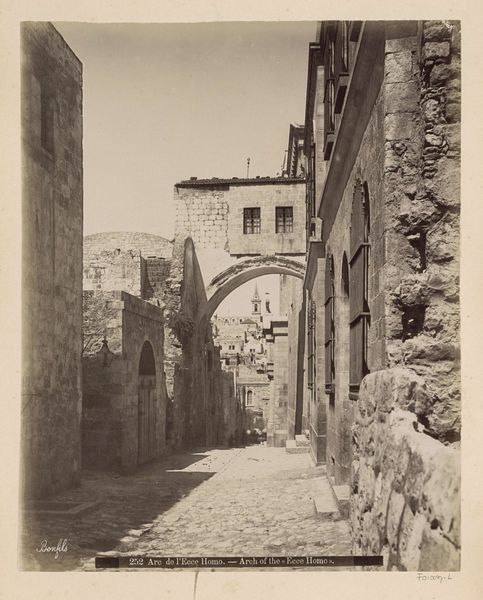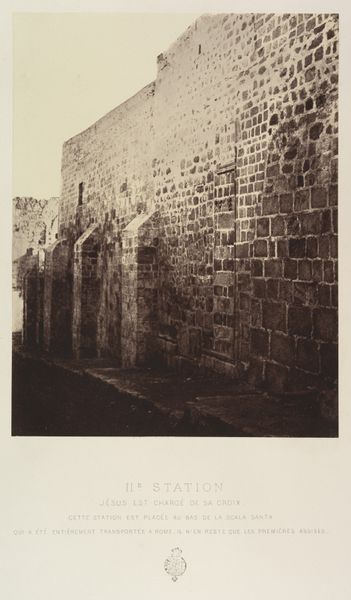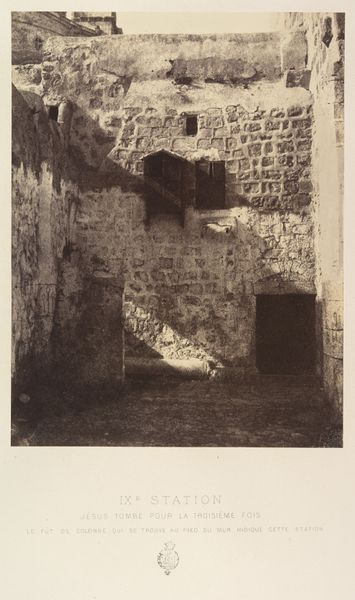
Jérusalem. Une rue de Jérusalem et entrée du Grand Couvent 1860
0:00
0:00
photography, albumen-print, architecture
#
photography
#
ancient-mediterranean
#
arch
#
orientalism
#
cityscape
#
street
#
albumen-print
#
architecture
Dimensions: Image: 11 1/8 × 8 3/8 in. (28.2 × 21.3 cm) Mount: 17 15/16 × 23 1/4 in. (45.5 × 59 cm)
Copyright: Public Domain
Curator: This albumen print by Louis de Clercq, taken around 1860, captures a street scene in Jerusalem near the Grand Convent. The stark architectural lines create a rather somber tone, don't you think? Editor: It’s fascinating. The textures jump out at me—the roughness of the stone walls against what appears to be a worn cobblestone street. It really grounds the image in its physical reality. Curator: Precisely. De Clercq was deeply influenced by Orientalism, a movement where European artists depicted the "exotic" Middle East, often through a colonial lens. How does the visual construction of this “street” uphold or challenge this tradition? Editor: Considering his technical precision and his commercial work—it would be valuable to know the working conditions surrounding this project. His material processes shaped both the aesthetic and the perception of Jerusalem at the time. Curator: Absolutely. De Clercq employed the then-new technology of photography to meticulously document the built environment. In that respect, does this enhance or potentially dilute the emotional and human experience of this cityscape? Editor: I see those aged stones, weathered by time and labor, and imagine generations walking that very street. I immediately think of access. The history of building the street and who used it must hold its own complex and interesting story. Curator: A pertinent point. These visual echoes resonate with debates about urban space and its relationship with power. Editor: Exactly! And even consider albumen print as a medium. What material resources were necessary for production, who handled the chemicals, what was the consumption pattern, and what impact did the processes have on those communities? Curator: Such a comprehensive focus helps reveal unseen facets of a familiar scene. Editor: And how art is made is just as important as why! De Clercq’s photo leaves me considering the material traces embedded in this photograph and its subsequent journey. Curator: For me, the photograph deepens my own understanding of Jerusalem’s contested urban past, seen not as a mere visual depiction, but also as a space deeply inscribed with socio-political meaning.
Comments
No comments
Be the first to comment and join the conversation on the ultimate creative platform.
